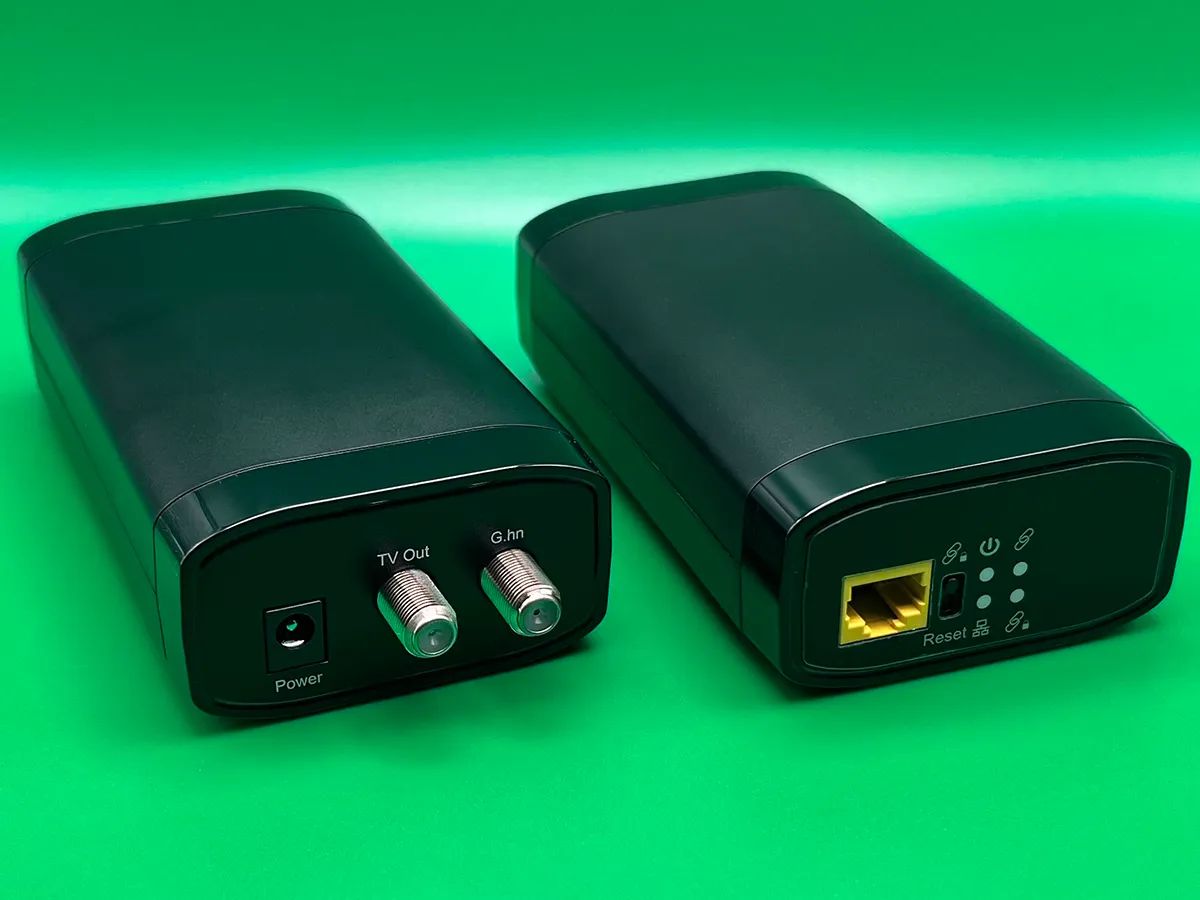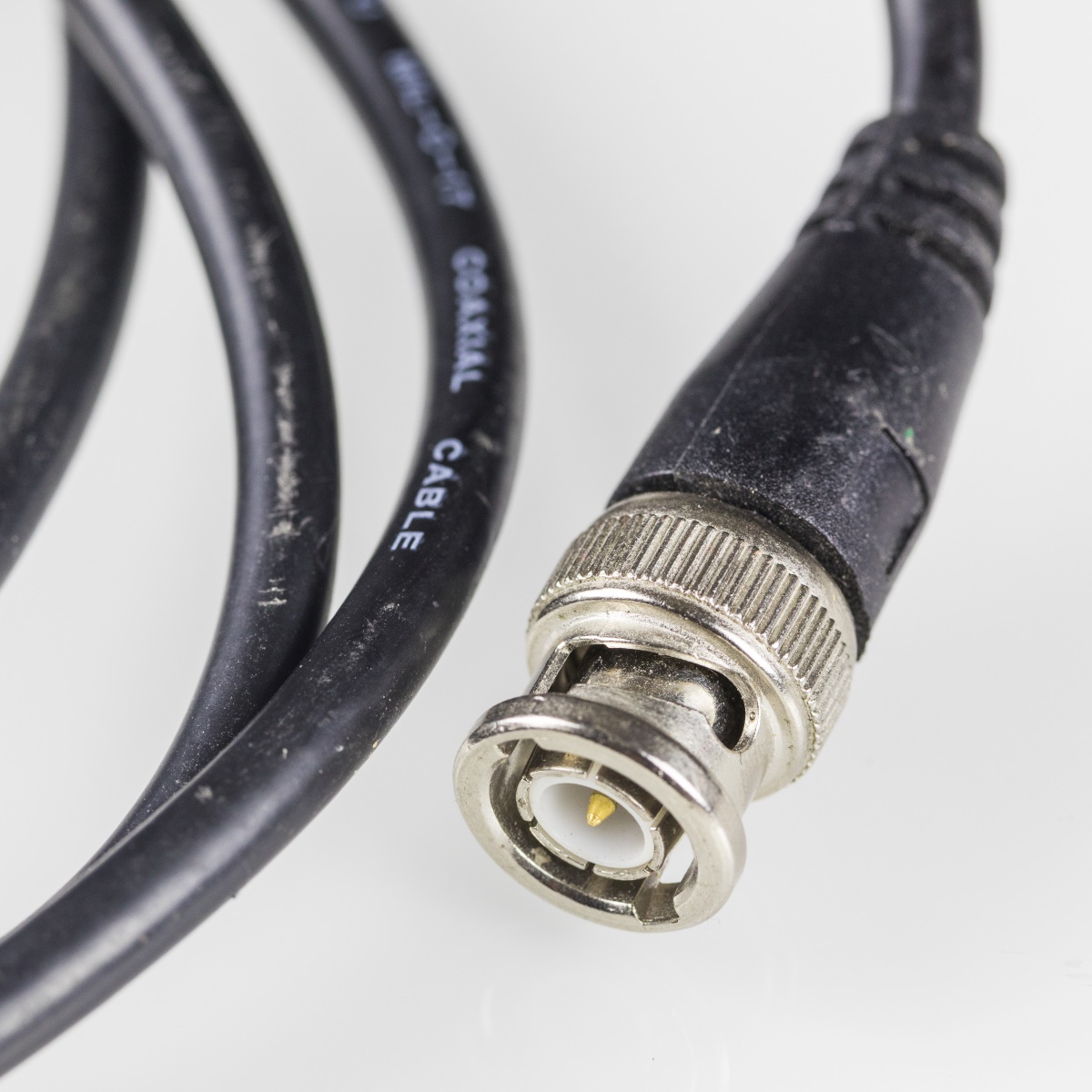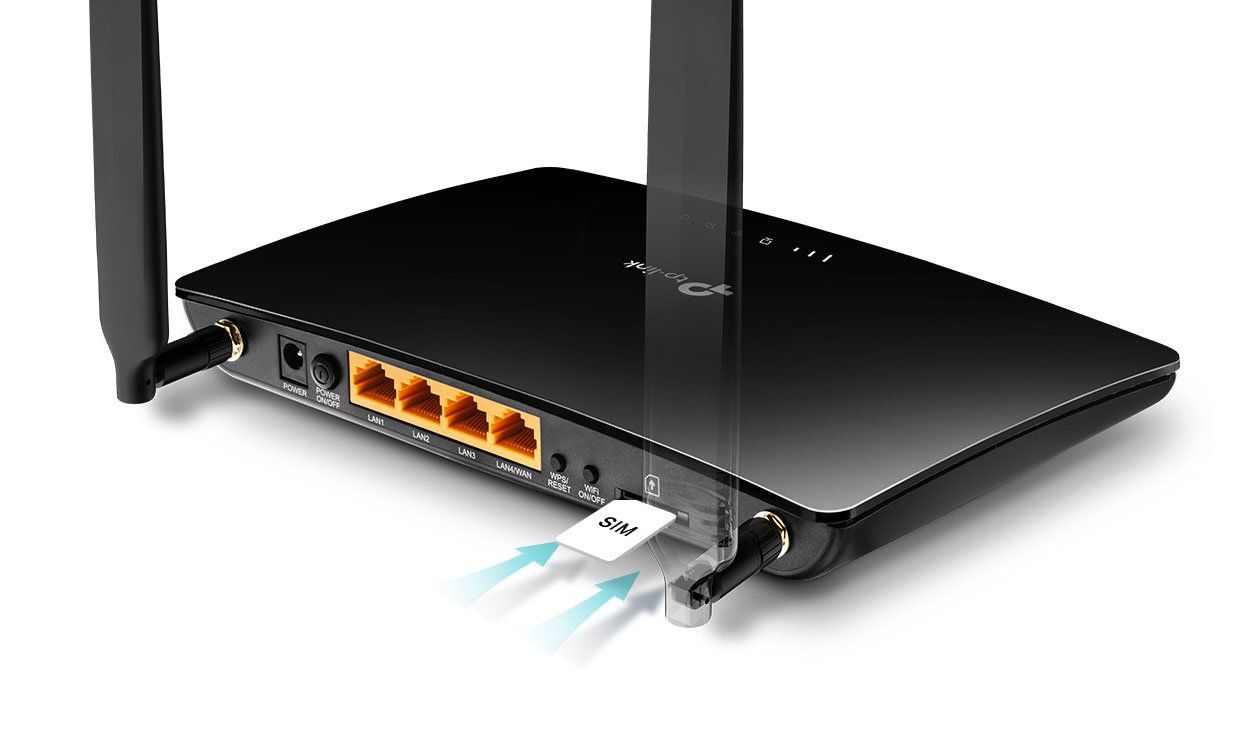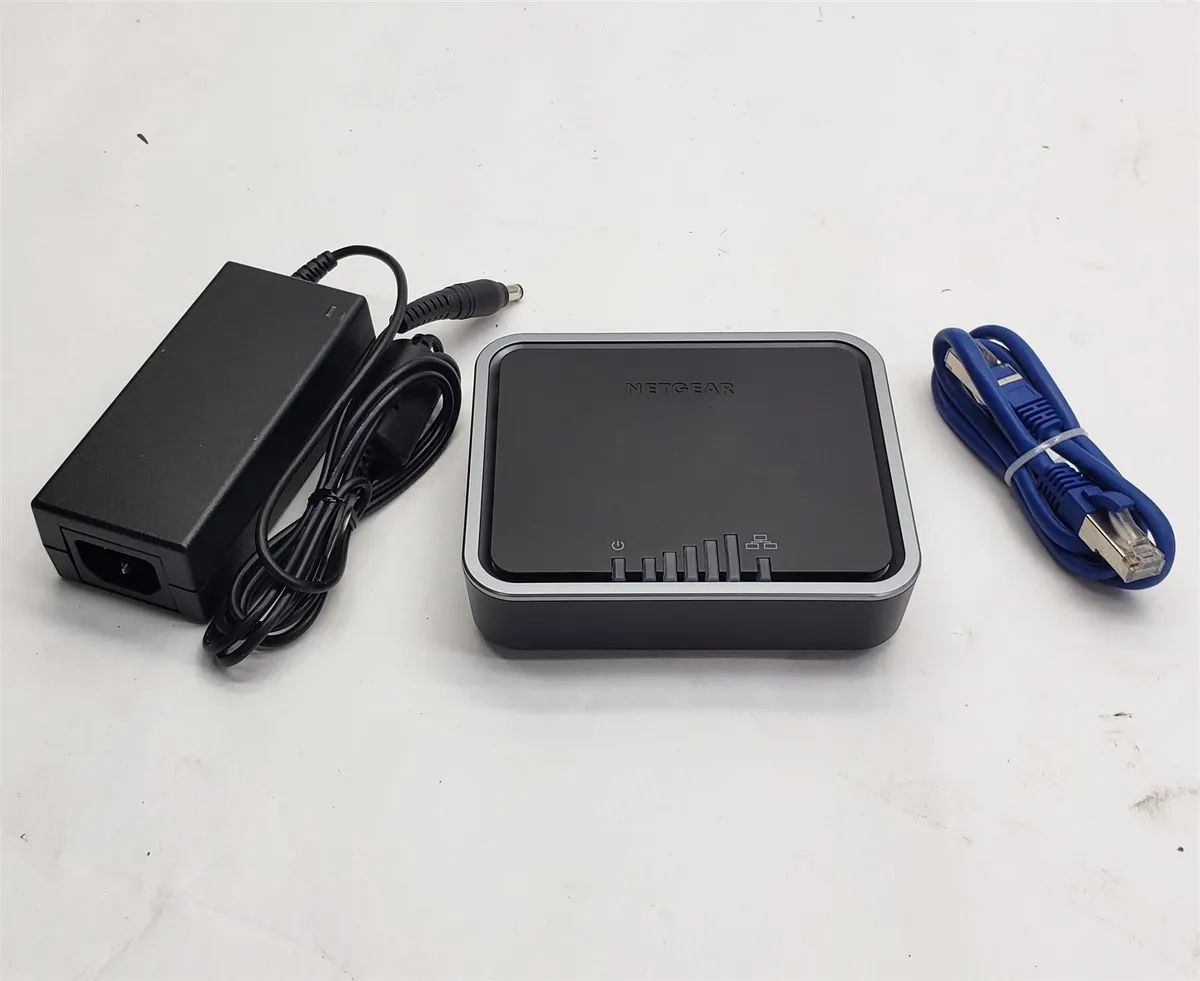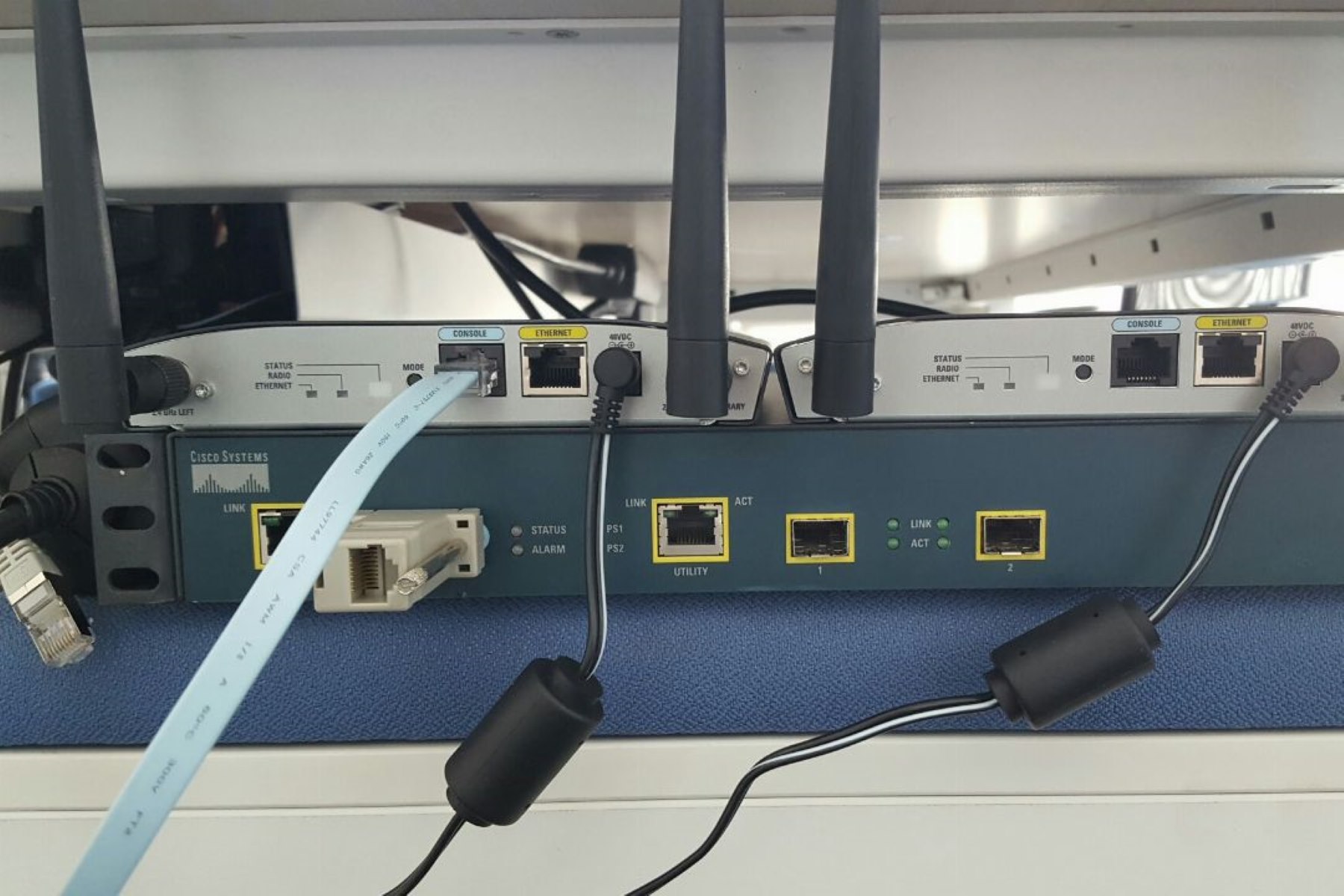Introduction
Welcome to the world of Carrier Ethernet, a game-changing technology that has transformed the way we connect and communicate in the digital age. Ethernet, a widely adopted networking standard, has evolved from its humble beginnings as a Local Area Network (LAN) technology to a powerful and scalable solution for wide-area networking.
In this article, we will delve into the intricacies of Carrier Ethernet and explore its key features, benefits, and service models. Whether you are a business owner, IT professional, or simply curious about networking technologies, this article will provide you with a comprehensive understanding of Carrier Ethernet and its application in today’s fast-paced digital landscape.
Before we dive into the specifics, let’s take a step back and briefly explore the fundamentals of Ethernet. Traditional Ethernet, also known as LAN Ethernet, operates within a confined area, such as an office building or campus, and is typically built using copper or fiber optic cables. It was designed to enable local network connections and facilitate the exchange of data between devices within the same network.
As businesses started expanding their operations and connecting geographically dispersed locations, the need for a more robust and scalable networking solution arose. Enter Carrier Ethernet, an extension of Ethernet technology that enables organizations to seamlessly connect disparate sites, deliver high-speed data connectivity, and support a wide range of applications.
Carrier Ethernet can be thought of as a set of standards and technologies that optimize Ethernet for wide-area networks (WANs). It leverages the power of Ethernet, along with advanced features and protocols, to provide reliable and scalable connectivity over long distances.
One of the key advantages of Carrier Ethernet is its ability to be deployed by service providers, or carriers, to offer Ethernet-based services to businesses and residential customers. These services can include Internet access, virtual private networks (VPNs), voice over IP (VoIP), video conferencing, and cloud connectivity, among others.
Carrier Ethernet brings several benefits to the table, which we will discuss in detail later in this article. It offers high bandwidth, low latency, and superior quality of service (QoS), making it an ideal choice for organizations that require fast and reliable connectivity for their mission-critical applications. Additionally, Carrier Ethernet is highly scalable, allowing businesses to easily upgrade their network capacity to meet growing demands.
Now that we have set the stage, let’s explore the key features of Carrier Ethernet and how it differs from traditional LAN Ethernet. Strap in and get ready to embark on an exciting journey through the world of Carrier Ethernet!
Overview of Ethernet
Ethernet is a widely adopted networking technology that serves as the foundation for local area networks (LANs) and has revolutionized the way we connect and communicate. Originally developed in the 1970s by Xerox Corporation, Ethernet has evolved to become the de facto standard for wired networking.
At its core, Ethernet enables devices to communicate and exchange data within a local network environment. It uses a set of rules, known as protocols, to govern the transmission of data packets over a physical medium, such as copper or fiber optic cables.
In an Ethernet network, devices are connected through switches, which act as intermediaries for data transfer. These switches forward data packets from the source device to the destination device based on their MAC (Media Access Control) addresses, ensuring efficient and reliable communication.
Over the years, Ethernet has witnessed several advancements and iterations, with each new standard bringing increased speeds and improved capabilities. The most commonly used Ethernet standards today are 10/100/1000 Mbps (Ethernet), 10 Gigabit Ethernet (10 GbE), and 100 Gigabit Ethernet (100 GbE).
Ethernet also supports various physical media types for data transmission, including copper cables (such as twisted pair or coaxial cables) and fiber optic cables. Copper cables are more cost-effective and suitable for shorter distances, while fiber optic cables offer higher speeds and longer reach.
Additionally, Ethernet employs Carrier Sense Multiple Access with Collision Detection (CSMA/CD) as its access method. This means that devices on an Ethernet network listen to the network’s traffic before transmitting data to ensure that no other devices are currently transmitting. If a collision is detected, the devices involved follow a predefined backoff algorithm to minimize further collisions and ensure fair access to the network.
Ethernet has played a pivotal role in connecting computers, servers, printers, and other devices within local networks, enabling efficient data sharing and resource utilization. It has become the backbone of modern communication, facilitating everything from internet browsing and file transfers to video streaming and online gaming.
Now that we have established a foundational understanding of Ethernet, let’s explore its extension, Carrier Ethernet, and how it has revolutionized wide area networking. Strap in, and get ready to dive deeper into the world of Carrier Ethernet!
What is Carrier Ethernet?
Carrier Ethernet is an extension of Ethernet technology that is specifically designed to provide reliable and scalable connectivity over wide-area networks (WANs). Unlike traditional Ethernet, which is typically deployed within a local area network (LAN) environment, Carrier Ethernet optimizes Ethernet for long-distance connections, allowing businesses to connect their geographically dispersed sites seamlessly.
In simple terms, Carrier Ethernet is Ethernet for service providers. It enables carriers, such as telecommunications companies and internet service providers (ISPs), to offer Ethernet-based services to their customers. These services can include high-speed internet access, virtual private networks (VPNs), voice over IP (VoIP), video conferencing, and more.
One of the key characteristics of Carrier Ethernet is its ability to deliver high bandwidth connectivity. It can provide speeds ranging from a few Mbps to several Gbps, allowing businesses to transfer large volumes of data quickly and efficiently. This is especially important for organizations that rely on bandwidth-intensive applications or cloud services.
Another distinguishing feature of Carrier Ethernet is its support for Quality of Service (QoS) mechanisms. QoS allows service providers to prioritize different types of traffic to ensure that critical applications, such as real-time video conferencing or voice calls, receive the necessary bandwidth and low latency. This enables businesses to deliver reliable and consistent performance for their applications.
In addition to high-speed connectivity and QoS, Carrier Ethernet also offers scalability. Businesses can easily scale up their network capacity as their needs grow, without significant infrastructure changes. This flexibility allows organizations to future-proof their network and accommodate increasing demands for data transfer.
Carrier Ethernet also incorporates advanced features and protocols that enhance network reliability and fault tolerance. These include link aggregation, which combines multiple physical connections into a single logical connection for increased bandwidth and redundancy, and Ethernet OAM (Operations, Administration, and Maintenance), which provides monitoring and fault detection capabilities to ensure network uptime.
Although Carrier Ethernet is primarily used by service providers, it is also increasingly being adopted by enterprises as a cost-effective and efficient solution for connecting their branch offices or remote locations. By leveraging Carrier Ethernet, organizations can achieve seamless integration and secure communication across their network infrastructure.
To summarize, Carrier Ethernet is an extension of Ethernet technology that enables service providers to deliver high-speed, scalable, and reliable connectivity over wide-area networks. It combines the ubiquity and familiarity of Ethernet with advanced features and protocols, making it an ideal choice for businesses that require robust network connectivity across multiple locations.
Key Features of Carrier Ethernet
Carrier Ethernet encompasses a range of features that set it apart from traditional Ethernet and make it an attractive option for businesses and service providers alike. Let’s explore some of the key features of Carrier Ethernet:
- Scalability: Carrier Ethernet offers scalability, allowing businesses to easily expand their network capacity as their needs grow. This scalability is achieved through flexible bandwidth options, enabling organizations to increase or decrease their network capacity without major infrastructure changes.
- High Bandwidth: One of the primary advantages of Carrier Ethernet is its ability to provide high-speed connectivity. It supports a wide range of bandwidth options, ranging from a few Mbps to several Gbps, enabling businesses to handle bandwidth-intensive applications and data transfer efficiently.
- Quality of Service (QoS): Carrier Ethernet incorporates QoS mechanisms to prioritize different types of traffic. This ensures that critical applications, such as voice and video, receive the necessary bandwidth and low latency, guaranteeing reliable and consistent performance.
- Reliability: Carrier Ethernet includes advanced features and protocols, such as link aggregation and Ethernet OAM (Operations, Administration, and Maintenance). These enhance network reliability and fault tolerance by providing increased bandwidth, redundancy, and fault detection capabilities.
- Service Level Agreements (SLAs): Carrier Ethernet services often come with SLAs, which define performance guarantees, such as uptime, latency, and packet loss. SLAs provide businesses with assurance and a measure of accountability from the service provider, ensuring consistent and reliable connectivity.
- Interoperability: Carrier Ethernet follows standardized protocols and specifications, ensuring interoperability across different vendors’ equipment and networks. This promotes flexibility and allows businesses to choose from a wide range of service providers and equipment vendors.
- Security: Carrier Ethernet includes built-in security measures, such as encryption and authentication mechanisms, to protect data during transmission. This ensures the confidentiality and integrity of sensitive information, making it suitable for secure communication between geographically dispersed locations.
These key features of Carrier Ethernet make it a compelling choice for businesses and service providers seeking a reliable, scalable, and high-performance networking solution. By leveraging Carrier Ethernet, organizations can optimize their wide-area network connectivity, enhance their productivity, and meet the demands of today’s data-intensive applications.
Benefits of Carrier Ethernet
Carrier Ethernet offers a multitude of benefits for businesses, service providers, and end-users alike. Let’s explore some of the key advantages of leveraging Carrier Ethernet:
- High-Speed Connectivity: One of the primary benefits of Carrier Ethernet is its ability to deliver high-speed connectivity. With bandwidth options ranging from a few Mbps to several Gbps, businesses can enjoy fast and efficient data transfer, enabling them to handle bandwidth-intensive applications and support data-intensive workflows.
- Scalability: Carrier Ethernet provides scalability, allowing businesses to easily scale their network capacity as their needs evolve. This flexibility enables organizations to adapt to changing demands without the need for major infrastructure changes, enabling seamless growth and avoiding costly network upgrades.
- Improved Productivity: The high-speed and reliable connectivity offered by Carrier Ethernet helps increase productivity for businesses. By providing fast access to applications, data, and cloud services, employees can work more efficiently, collaborate seamlessly, and access critical information in real-time, resulting in enhanced productivity and overall business performance.
- Reliable Performance: Carrier Ethernet incorporates Quality of Service (QoS) mechanisms that prioritize critical traffic, ensuring reliable performance for mission-critical applications. By guaranteeing appropriate bandwidth, low latency, and minimal packet loss, Carrier Ethernet ensures consistent and reliable performance, even during peak usage periods.
- Cost-Effectiveness: Implementing Carrier Ethernet can often provide cost savings compared to traditional networking solutions. By leveraging existing Ethernet infrastructure and utilizing shared resources within a Carrier Ethernet network, businesses can achieve cost-effective connectivity across multiple locations, minimizing the need for dedicated infrastructure at each site.
- Flexibility and Interoperability: Carrier Ethernet follows standardized protocols, ensuring compatibility and interoperability across different vendors and equipment. This provides businesses with the flexibility to choose from a wide range of service providers and easily integrate various networking components, making it a future-proof and scalable solution.
- Enhanced Collaboration: Carrier Ethernet enables seamless communication and collaboration between geographically dispersed locations. With features such as video conferencing, VoIP, and secure VPNs, businesses can facilitate real-time collaboration, improve communication across teams, and enhance decision-making processes.
- Security: Carrier Ethernet incorporates built-in security measures, such as encryption and authentication mechanisms, to protect data during transmission. This ensures the confidentiality and integrity of sensitive information, making it suitable for industries with strict security and compliance requirements.
With its high-speed connectivity, scalability, reliability, cost-effectiveness, and enhanced productivity, Carrier Ethernet is a compelling choice for organizations looking to optimize their wide-area networking infrastructure. By leveraging its benefits, businesses can improve operational efficiency, streamline communication, and stay ahead in today’s competitive digital landscape.
Carrier Ethernet Service Models
Carrier Ethernet offers various service models that cater to the diverse needs of businesses and service providers. These service models define the type of connectivity, performance parameters, and service level agreements (SLAs) associated with Carrier Ethernet services. Let’s explore some of the common Carrier Ethernet service models:
- E-Line: The E-Line service model, also known as Ethernet Virtual Private Line (EVPL), provides point-to-point connectivity between two customer locations. It simulates a dedicated physical connection, allowing businesses to securely transmit data between remote offices or to a central location. E-Line services are typically used for applications that require high security and strict performance guarantees.
- E-LAN: The E-LAN service model, also referred to as Ethernet Virtual Private LAN (VPL), offers multipoint-to-multipoint connectivity. It enables businesses with multiple locations to establish a virtual LAN, connecting distributed sites and facilitating seamless communication and data transfer. E-LAN services are commonly used for applications that require efficient collaboration and interconnection between various branches.
- E-Tree: The E-Tree service model provides a hierarchical point-to-multipoint connectivity structure. It allows a central location, such as a headquarters or data center, to communicate with multiple remote sites. The E-Tree model is ideal for businesses with a hub-and-spoke network architecture, such as retail chains or financial institutions, where central communication and data flow are essential.
- E-Access: The E-Access service model enables businesses to connect to service providers’ Ethernet networks. It provides the essential connectivity needed to access carrier services, such as internet access or cloud connectivity. E-Access services allow organizations to securely connect to the carrier network and benefit from the carrier-grade infrastructure and bandwidth options they provide.
- E-Transit: The E-Transit service model allows service providers to exchange traffic with other service providers through an Ethernet exchange point. It facilitates the efficient exchange of data traffic between different networks, enhancing global connectivity and enabling seamless communication between customers of different carriers.
Each Carrier Ethernet service model offers distinct characteristics and benefits, catering to specific networking requirements. These models provide businesses with the flexibility to choose the most suitable configuration based on their unique needs, ensuring efficient and reliable network connectivity across multiple locations.
When selecting a Carrier Ethernet service, it’s essential for businesses to evaluate their specific requirements, including bandwidth needs, geographical coverage, security considerations, and performance guarantees. By understanding the available service models and their capabilities, organizations can make informed decisions and leverage Carrier Ethernet services that align with their networking objectives.
Committed Information Rate (CIR) and Excess Information Rate (EIR)
In the realm of Carrier Ethernet, Committed Information Rate (CIR) and Excess Information Rate (EIR) are two important concepts that govern the bandwidth allocation and performance guarantees associated with Carrier Ethernet services. Let’s explore these concepts and how they impact the delivery of Carrier Ethernet connectivity:
Committed Information Rate (CIR):
CIR represents the guaranteed minimum bandwidth or data rate that is allocated to a customer’s Carrier Ethernet service. It ensures that a certain level of bandwidth is always available to fulfill the customer’s specific application requirements. The CIR is defined by the Service Level Agreement (SLA) and represents the committed level of service that the service provider guarantees to deliver.
For example, if a business opts for a Carrier Ethernet service with a CIR of 10 Mbps, the service provider ensures that the business will always have a minimum of 10 Mbps bandwidth available for their critical applications, even during peak usage periods. This helps maintain consistent performance and reliable connectivity for the designated applications that require a certain level of bandwidth.
Excess Information Rate (EIR):
EIR represents the additional bandwidth beyond the CIR that the Carrier Ethernet service can provide, subject to availability and network conditions. It is often referred to as “burstable” bandwidth because it allows customers to exceed their guaranteed CIR for short durations when additional bandwidth is available in the network.
Continuing with the previous example, if the business has a Carrier Ethernet service with a CIR of 10 Mbps and an EIR of 5 Mbps, they can utilize up to 15 Mbps of bandwidth when needed. However, the availability of the EIR bandwidth is not guaranteed at all times and depends on the network’s overall capacity and usage by other customers. The availability of EIR bandwidth is typically defined in the SLA and may be subject to additional charges.
The combination of CIR and EIR provides businesses with a flexible and scalable solution, allowing them to access additional bandwidth when required while ensuring a minimum level of service even during periods of high network utilization.
Both CIR and EIR are important considerations for businesses when selecting a Carrier Ethernet service. By understanding these parameters and defining their specific bandwidth needs, organizations can choose the appropriate service level to support their critical applications and ensure optimal performance for their network infrastructure.
Service Level Agreements (SLAs) in Carrier Ethernet
Service Level Agreements (SLAs) play a crucial role in defining the performance guarantees and quality of service for Carrier Ethernet connectivity. SLAs are contractual agreements between the service provider and the customer that outline specific metrics, such as availability, latency, packet loss, and response times, to ensure that the Carrier Ethernet service meets the customer’s requirements. Let’s delve into the key aspects of SLAs in Carrier Ethernet:
Performance Metrics:
SLAs in Carrier Ethernet define various performance metrics that the service provider guarantees to deliver. These metrics may include availability (uptime percentage), latency (maximum delay for data transmission), packet loss (maximum allowed loss of data packets), and jitter (variance in packet delay). By setting clear performance targets, SLAs ensure that the Carrier Ethernet service meets the customer’s expected levels of performance and reliability.
Service Guarantees:
SLAs also specify the service guarantees provided by the service provider. These guarantees ensure that the customer receives the committed level of service, such as the Committed Information Rate (CIR), which represents the minimum guaranteed bandwidth allocation. SLAs may also outline parameters related to the Excess Information Rate (EIR), which allows the customer to utilize additional bandwidth beyond the CIR on a best-effort basis.
Uptime and Maintenance:
SLAs define the expected uptime of the Carrier Ethernet service, usually expressed as a percentage, such as 99.9% or 99.99%. This reflects the service provider’s commitment to ensuring that the service is consistently available for the customer. SLAs also cover maintenance windows, during which the service provider may perform necessary network upgrades or maintenance activities that could temporarily impact service availability. It is common for service providers to include provisions for planned maintenance and notify customers in advance to minimize disruptions.
Customer Support and Remedies:
SLAs typically outline customer support provisions, such as the availability of a dedicated support team, response times for inquiries or trouble ticket resolution, and escalation procedures for handling critical issues. If the service provider fails to meet the SLA’s performance guarantees, remedies and compensation may be specified in the agreement. These remedies could include service credits or refunds to compensate for any service disruptions or performance issues experienced by the customer.
Monitoring and Reporting:
SLAs often include provisions for monitoring and reporting on the performance of the Carrier Ethernet service. Service providers may deploy monitoring tools and systems to track relevant metrics and provide regular reports to customers. These reports give customers visibility into how the service is performing and serve as a means to ensure transparency and accountability on the part of the service provider.
SLAs in Carrier Ethernet are essential for establishing clear expectations and ensuring reliable performance and service quality. By establishing performance metrics, outlining service guarantees, addressing customer support, and providing remedies for service disruptions, SLAs provide a framework for a mutually beneficial relationship between the service provider and the customer.
Differences between Carrier Ethernet and traditional Ethernet
While both Carrier Ethernet and traditional Ethernet are based on the same underlying technology, there are several key differences between the two. Understanding these differences is essential for businesses and organizations that are considering implementing a wide-area network (WAN) solution. Let’s explore the distinctions between Carrier Ethernet and traditional Ethernet:
Scope and Distance:
Traditional Ethernet is typically deployed in a local area network (LAN) environment, such as within an office building or campus. It is designed for relatively short-distance communication and is limited to a specific geographical area. In contrast, Carrier Ethernet expands Ethernet’s reach by enabling reliable and scalable connectivity over wide-area networks (WANs), allowing businesses to connect geographically dispersed sites over long distances.
Service Provider Involvement:
Traditional Ethernet is generally implemented and managed by the organization that owns the network, such as an enterprise or institution. In contrast, Carrier Ethernet involves a service provider, such as a telecommunications company or internet service provider (ISP), who offers Ethernet-based services to businesses and residential customers. The service provider manages the underlying network infrastructure, providing connectivity, maintenance, and support services.
Bandwidth and Performance:
Carrier Ethernet provides higher bandwidth capabilities compared to traditional Ethernet. While traditional Ethernet speeds typically range from 10 Mbps to 1 Gbps, Carrier Ethernet can support much higher speeds, from 10 Mbps to several Gbps or even 100 Gbps. Carrier Ethernet is specifically designed to handle bandwidth-intensive applications and data transfer over wide-area networks, offering businesses the necessary performance for their critical operations.
Quality of Service (QoS):
Carrier Ethernet incorporates advanced QoS mechanisms to prioritize different types of traffic and ensure consistent performance for critical applications. This is particularly important for applications such as voice and video, which require low latency and minimal packet loss. Traditional Ethernet does not provide the same level of QoS capabilities, making Carrier Ethernet a preferred choice for businesses that rely on reliable and high-quality communication and data transfer.
Service Level Agreements (SLAs):
Carrier Ethernet services typically come with SLAs, which define performance guarantees and service commitments from the service provider. These SLAs outline metrics such as availability, latency, and packet loss, ensuring that the service provider meets predetermined service levels. In contrast, traditional Ethernet deployments within an organization’s LAN typically do not involve formal SLAs or predetermined performance guarantees.
Flexibility and Scalability:
Carrier Ethernet offers greater flexibility and scalability compared to traditional Ethernet. Traditional Ethernet networks often require significant infrastructure changes to accommodate increases in network capacity or the addition of new locations. Carrier Ethernet, on the other hand, allows businesses to easily scale their network capacity and connect new sites without major infrastructure modifications, offering much-needed flexibility for growing organizations.
By understanding these differences, businesses can make informed decisions when considering whether to adopt Carrier Ethernet for their wide-area networking needs. Carrier Ethernet provides the scalability, performance, and service guarantees that are essential for businesses operating in today’s connected and data-intensive environments.
Use Cases for Carrier Ethernet
Carrier Ethernet provides a versatile and reliable networking solution that caters to a wide range of use cases for businesses and organizations. Its scalability, high-speed connectivity, and performance guarantees make it applicable in various industries and scenarios. Let’s explore some common use cases for Carrier Ethernet:
- Enterprise Connectivity: Carrier Ethernet enables businesses to connect their geographically dispersed offices, branches, and remote locations seamlessly. It provides high-speed, reliable, and secure connectivity for critical business applications, facilitating efficient data transfer, collaboration, and communication across the organization.
- Data Centers: Carrier Ethernet is widely used to interconnect multiple data centers. It enables organizations to establish secure and high-capacity connections between data centers, facilitating data backup and disaster recovery processes. Carrier Ethernet’s scalability and low latency are particularly beneficial for data-intensive applications and ensuring uptime and business continuity.
- Cloud Connectivity: Carrier Ethernet is an ideal choice for connecting to cloud service providers and accessing cloud-based applications and services. It provides high-bandwidth connectivity with low latency, ensuring fast and reliable access to cloud resources. Carrier Ethernet accommodates the increasing demand for seamless and secure cloud connectivity, enabling businesses to leverage the benefits of the cloud without compromising performance.
- Video Conferencing and Collaboration: With its high-quality performance and low latency, Carrier Ethernet supports real-time video conferencing and collaboration applications. It ensures smooth and uninterrupted communication, enabling geographically dispersed teams to collaborate effectively, conduct virtual meetings, and share data in real-time.
- Internet Service Providers (ISPs): Carrier Ethernet offers ISPs a scalable and cost-effective solution for delivering high-speed internet services to their customers. It allows ISPs to provide reliable broadband connectivity with guaranteed performance levels, catering to the growing demand for bandwidth-intensive applications, streaming, and online gaming.
- Telecommunications: Carrier Ethernet is widely used in the telecommunications industry for facilitating voice, data, and video services. It enables service providers to deliver voice over IP (VoIP) services, multimedia applications, and IPTV (Internet Protocol Television) with high-quality performance and low latency.
- Healthcare: In the healthcare industry, Carrier Ethernet ensures secure and reliable connectivity between hospitals, clinics, and medical facilities. It supports the seamless exchange of patient data, medical imaging, and telemedicine applications, ensuring efficient collaboration between healthcare professionals and improving patient care.
- Financial Services: Carrier Ethernet provides the high-speed and secure connectivity required for financial institutions, enabling them to process transactions, handle sensitive financial data, and implement real-time trading systems. It ensures low-latency connectivity for real-time data feeds, supporting the fast and reliable execution of financial transactions.
These use cases represent just a few examples of how Carrier Ethernet is utilized across various industries. Its ability to deliver scalable, high-speed, and reliable connectivity makes it a versatile solution for organizations seeking to enhance their network infrastructure, improve performance, and enable seamless communication and collaboration across multiple locations.
Conclusion
Carrier Ethernet has revolutionized wide-area networking, providing businesses and organizations with a scalable, high-speed, and reliable connectivity solution. From enterprise connectivity to data centers, cloud connectivity, video conferencing, and more, Carrier Ethernet offers a wide range of use cases across various industries.
With its key features, including scalability, high bandwidth, Quality of Service (QoS), and Service Level Agreements (SLAs), Carrier Ethernet ensures optimal performance and guaranteed service levels. It enables businesses to efficiently transfer large volumes of data, support bandwidth-intensive applications, and collaborate seamlessly across geographically dispersed locations. The ability to easily scale network capacity and the flexibility to choose from different service models make Carrier Ethernet an attractive option for organizations of all sizes.
As technology continues to advance and businesses rely more heavily on digital connectivity, Carrier Ethernet remains at the forefront of enabling efficient and effective wide-area networking. Its role in supporting critical applications, providing secure cloud connectivity, facilitating video conferencing, and powering the interconnectedness of industries such as healthcare and finance cannot be underestimated.
When considering the implementation of Carrier Ethernet, it is essential for businesses to carefully evaluate their specific networking requirements, bandwidth needs, and performance guarantees. By partnering with a reliable service provider and leveraging the benefits of Carrier Ethernet, organizations can optimize their wide-area network infrastructure, enhance productivity, and stay ahead in today’s interconnected and data-driven world.
As technology continues to evolve, Carrier Ethernet is poised to play an integral role in shaping the future of wide-area networking, offering businesses the ability to embrace digital transformation and thrive in the era of connectivity.












